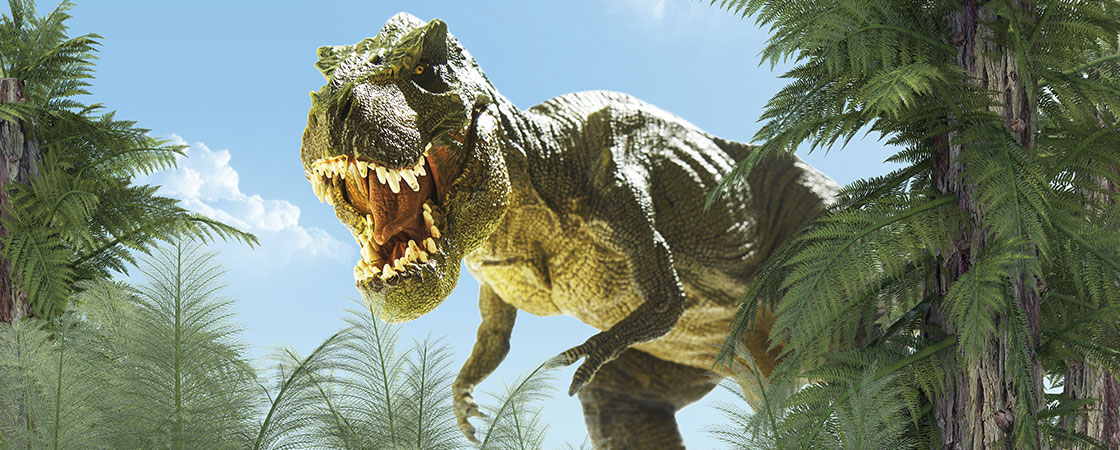BOOM! The ground shakes. You look up in wonder. Staring down at you is an enormous creature. Its neck is 70 feet long—almost twice the length of your school bus. The beast takes a thundering step toward you. It feels like a mini earthquake.
This is one of the mighty titanosaurs (TY-tan-uh-sors). They are the biggest dinosaurs—and animals—to ever walk the planet. This one is taller than a seven-story building and longer than a basketball court.
The monster reaches its long neck toward you. Look out! But it’s just biting a branch off a leafy tree. Phew. You’re not on this creature’s dinner menu. Like many dinosaurs, this one’s an herbivore. It eats only plants.
You hear a terrifying Roar! in the distance. You’re not safe yet—not even close. You’re on Earth 66 million years ago. This is the time of the dinosaurs.
BOOM! The ground shakes. You look up in wonder. A huge creature stares down at you. Its neck is almost as long as two school buses. The creature takes a step toward you. It feels like a mini earthquake.
This is one of the titanosaurs (ty-tan- uh-sors). They are the world’s biggest dinosaurs. (They’re also the world’s biggest animals!) This one is taller than a seven-story building. It’s longer than a basketball court.
The titanosaur moves toward you. Look out! But it’s just biting a branch off a leafy tree. You relax for a moment. You’re not on the titanosaur’s dinner menu. This dinosaur is an herbivore. Like many dinosaurs, it eats only plants.
You hear a scary Roar! in the distance. You’re not safe yet. Not even close. You’re on Earth 66 million years ago. This is the time of the dinosaurs.

